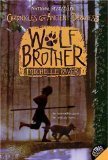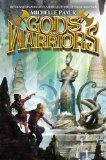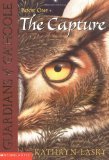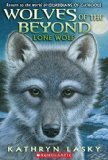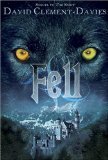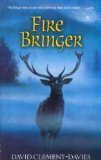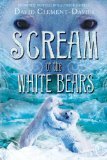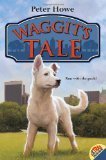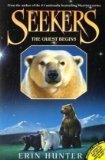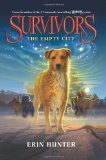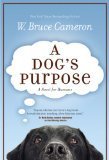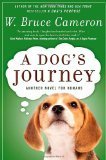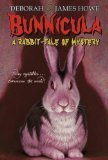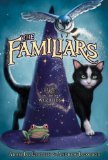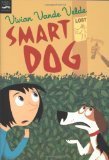C.J. Brightley's Blog, page 17
June 27, 2013
Writer’s Block and How to Defeat It
Most writers deal with writer’s block at some point in their career. It can be incredibly discouraging, and it doesn’t always result from a lack of “inspiration” or discipline. Without dealing with the root causes, writer’s block can continue to be a problem.
In my experience, writer’s block is a result of either fear or confusion.
Fear
(NOTE: I drafted this post quite a while ago and then I watched this video. Watch it! It’s less than five minutes long. Apparently, we’re on the same wavelength.)
Fear of looking stupid. Fear of imperfection. Fear of emotions you don’t want to explore. Fear of being judged.
Fear isn’t entirely bad. Fear is what prevents writers from sending that ugly first draft out into the wide world with our name on it, naively confident in its brilliance. We don’t want to look stupid. We don’t want to be judged.
But fear is only useful during the editing process. Let fear of imperfection help you refine that rough, disjointed first draft into a polished final copy. Don’t let fear keep you from writing at all.
Give yourself permission to write an ugly first draft. Remind yourself that no one will see it. Keep your word to yourself… don’t show anyone that first draft! Get it all out on paper, edit, and THEN send it out to your chosen beta readers and writing buddies.
Use that fear as a tool, not as an obstacle.
Confusion
Most of the time writer’s block stems from fear, but sometimes I’m just stumped. I don’t know what comes next and staring at the blank paper or screen just makes it worse. Some people also say that when that happens, just write random stuff until you get unstuck… write about ninjas invading your story, or what you had for breakfast. Write anything, as long as you write, and eventually you’ll get unstuck.
That doesn’t work for me. Instead, I suggest:
Don’t try to write when you’re stalled. Instead, get a new sheet of paper and just brainstorm. What comes next? What defines your characters? What decisions must they face? Draw arrows, write out of order, figure out what’s going on with the characters and your story. Even if you only address a few scenes, you’ll get some ideas. This is more about your thought process than the notes that result.
People always say “write what you know”… that’s good advice, but not necessarily as it’s usually applied. It doesn’t mean that if you’re a schoolteacher, you can only write stories with schoolteachers as characters, or if you’re a soldier, you can only write stories about war and military beauracracy. It means that you have to know your characters and know your story.
Try writing a detailed outline – major story arcs, then minor story arcs, finally breaking the story down by scene. Just try… you may not get to the end before you feel absolutely compelled to start writing! You might discover that the process of outlining helps you, and you’re an outliner after all.
If you’re a confirmed pantser (as opposed to an outliner), you may not want to outline the whole novel. That’s fine… not everyone benefits from detailed planning. However, if you are stuck, try spending ten minutes just thinking about the next scene. Don’t write it, just think about it (jotting a few notes is fine). What happens? Which characters are present? Is it a turning point in some way? Is important information revealed, and if so, do the characters realize it and react in interesting ways? Do you know in general where your story is going? Consider one step toward that point – just one. It could be an action-plot type event, or a bit of character development, or something else.
I’ve been confused by my stories before. Some plots can be confusing, and authors writing long, complex epics may need to take notes and refer to reference materials. But generally confusion doesn’t result from the complexity of the story… instead, it’s because I’m trying to come up with words to tell the story before I know the story I’m trying to tell.
Separate the thinking step and the writing step. Figure out what you want to write, then write it.
Last Thoughts
If you’ve done the steps above, and you’re still feeling stuck, there are some other tricks to getting words flowing. However, at least for me, they work best when I’ve already done the steps above. I’ll write a post about them in a few weeks, but in the meantime…
If you’re a writer, how do you deal with writer’s block? Is it ever a problem for you? If not, why do you think that is?
~~~~~
Please connect with me on Facebook or Google+!
The post Writer’s Block and How to Defeat It appeared first on C. J. Brightley.
ou May Also Like:
My Writing Process
How to Choose and Use Beta Readers
Tech Tools for Writers

June 26, 2013
Protected: Super Secret Kickstarter Rewards Post
This post is password protected. To view it please enter your password below:
Password:
~~~~~
Please connect with me on Facebook or Google+!
The post Protected: Super Secret Kickstarter Rewards Post appeared first on C. J. Brightley.
ou May Also Like:
Erdemen Honor Book3 Kickstarter!

June 25, 2013
Guest Post: Blood with a Twist
Today we have a guest post from Dave Higgins on vampire stories and myths. Thanks to Dave, I’ve added more works to my To Be Read list (which is long enough to last years already!). Please check out Dave’s website and work too.
I’ve added links throughout the post. The links on author names to go the author page on Goodreads, where you can find reviews of the books as well as easily find other books by the same authors. The links on individual titles go to the Amazon page for that book. In the case of series, I’ve linked to the first book in the series (that’s also the case with the images).
Blood With a Twist
The first vampire novel I bought was Vampire of the Mists by Christie Golden, a tie-in novel for Dungeons and Dragons’ Ravenloft setting. Although it was, by design, a collection of classic vampire tropes with only elves to making it special, it marked the beginning of a lifetime love of vampire stories. Since then I have read many much better versions of the archetypal fanged aristocrat, both classic and little known. However, my greatest pleasure has been in stories that expand the myth into new areas without losing the actual vampire in the process.
by Christie Golden, a tie-in novel for Dungeons and Dragons’ Ravenloft setting. Although it was, by design, a collection of classic vampire tropes with only elves to making it special, it marked the beginning of a lifetime love of vampire stories. Since then I have read many much better versions of the archetypal fanged aristocrat, both classic and little known. However, my greatest pleasure has been in stories that expand the myth into new areas without losing the actual vampire in the process.
While there have been many stories that contained a paragraph or chapter that caused me to pause and consider possible mythologies, there are five novels/series that stand out. They might not be the first use of the idea, or be perfect throughout, but they did that idea well:

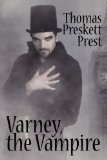
Varney the Vampire (1847) by James Malcolm Rymer (or Thomas Preskett Prest)
(1847) by James Malcolm Rymer (or Thomas Preskett Prest)
Dracula and the work of the Romantics definitively split the vampire from the werewolf, the noble feeder on blood from the bestial eater of flesh. This penny dreadful turns the divide on its head. Instead of a tale about a Byronic hero, tortured by lost love or pursuing eternal schemes, Varney is a tale of day-to-day human goals. Indeed vampirism is only one thread of the work; in many instances large parts of the characters’ stories would play out identically in a romance or history.


I Am Legend (1954) by Richard Matheson
(1954) by Richard Matheson
This novel starts out as a survivor tale: a mysterious plague leaves one man, possibly the last man, alive in the middle of a world of blood-drinking creatures. However, these are not the shambling hordes of a zombie infestation; they are intelligent, social beings. This novel rejects the idea of vampire as a creature of a supernatural realm, of lone believers hampered by society’s disbelief; here vampires are not only accepted by society, they are society.


The World on Blood (1997) by Jonathan Nasaw
(1997) by Jonathan Nasaw
In their transition from shroud chewing beasts to well dressed protagonists, vampires were often metaphors, veiled or not, for more mundane concerns such as venereal disease, class struggle, or our desire to believe evil comes from outside. This novel makes the metaphor the story: a genetic quirk makes some humans process blood as a drug, with both physiological changes and addiction. Although other works had touched on the horror of beings tortured by feeding on what they were, this story removes the separation of former humanity, showing the protagonists feeding on their own species for pure gain. This deviation from the inhuman feeding for survival shows the vampire freed of external forces; the vampire with mundane concerns from Varney has become the mundane with vampire concerns.
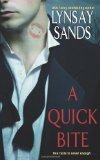

Argeneau Vampires Series (2003 – present) by Lynsay Sands
(2003 – present) by Lynsay Sands
Much of this series uses the standard tropes of paranormal romance; vampires hiding in plain sight, misinterpretation, protagonists held back by entirely human pasts. However, the creation myth of blood-borne medical nanites makes this a rare example of the explained vampire: their powers are more than human but not impossible and their blood hunger an integral part of the myth rather than a side effect. The need to transfuse both blood and nanites as part of creating a new vampire also produces a new and consistent theory on why vampires have limited numbers: if only a few people are compatible then even vampires who reject social pressure cannot raise legions.
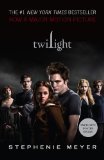

Twilight (2005) by Stephenie Meyer
(2005) by Stephenie Meyer
One of the biggest complaints levelled at this novel also show its greatest innovation: the sparkly vampire. While some people dismiss this as a self-indulgent flaw, an example of vampire-world-problems, this ignores the merging of the new vampire with ancient roots. Since their adoption by the Romantics the vampire has been becoming more often beautiful than monstrous and more often ethically conflicted than Divinely rejected. Where the original myth talks of the weaknesses of damnation, the modern myth ignores the Sun as the Eye of the Divine or replaces it with a more neutral explanation (a heightened susceptibility to ultraviolet radiation, a desiccation of the body). In the sparkly vampire we are given the new vampire myth of beauty taken to its logical extreme: they do not fear the Sun because of Divine Judgement but because they are too beautiful.
Of course to make the question manageable, this list is based on two hidden rules: that Dracula is the baseline for written vampires and that vampires are based on a European monster. If you instead look at any blood-drinking sentient creature then folklore from across the world gives a new baseline.
Which novels changed the portrayal of vampires for you? Which of my list do you think are actually repeating an established idea?
About Dave Higgins (guest poster)
 Dave Higgins has worked in law and IT for public and private sector organisations. When not pursuing these hobbies, he writes poetry and speculative fiction, and can be found blogging at Davetopia. His short story, Thieves in the Night, is due to be published later this year in The Fauxpocalypse Project.
Dave Higgins has worked in law and IT for public and private sector organisations. When not pursuing these hobbies, he writes poetry and speculative fiction, and can be found blogging at Davetopia. His short story, Thieves in the Night, is due to be published later this year in The Fauxpocalypse Project.
~~~~~
Please connect with me on Facebook or Google+!
The post Guest Post: Blood with a Twist appeared first on C. J. Brightley.
ou May Also Like:
Guest Post: Animals in Fantasy
The Different Facets of Fantasy: Guest Post
Choosing Cover Art: Guest Post

Blood with a Twist
Today we have a guest post from Dave Higgins on vampire stories and myths. Thanks to Dave, I’ve added more works to my To Be Read list (which is long enough to last years already!). Please check out Dave’s website and work too.
I’ve added links throughout the post. The links on author names to go the author page on Goodreads, where you can find reviews of the books as well as easily find other books by the same authors. The links on individual titles go to the Amazon page for that book. In the case of series, I’ve linked to the first book in the series (that’s also the case with the images).
Blood With a Twist
The first vampire novel I bought was Vampire of the Mists by Christie Golden, a tie-in novel for Dungeons and Dragons’ Ravenloft setting. Although it was, by design, a collection of classic vampire tropes with only elves to making it special, it marked the beginning of a lifetime love of vampire stories. Since then I have read many much better versions of the archetypal fanged aristocrat, both classic and little known. However, my greatest pleasure has been in stories that expand the myth into new areas without losing the actual vampire in the process.
by Christie Golden, a tie-in novel for Dungeons and Dragons’ Ravenloft setting. Although it was, by design, a collection of classic vampire tropes with only elves to making it special, it marked the beginning of a lifetime love of vampire stories. Since then I have read many much better versions of the archetypal fanged aristocrat, both classic and little known. However, my greatest pleasure has been in stories that expand the myth into new areas without losing the actual vampire in the process.
While there have been many stories that contained a paragraph or chapter that caused me to pause and consider possible mythologies, there are five novels/series that stand out. They might not be the first use of the idea, or be perfect throughout, but they did that idea well:


Varney the Vampire (1847) by James Malcolm Rymer (or Thomas Preskett Prest)
(1847) by James Malcolm Rymer (or Thomas Preskett Prest)
Dracula and the work of the Romantics definitively split the vampire from the werewolf, the noble feeder on blood from the bestial eater of flesh. This penny dreadful turns the divide on its head. Instead of a tale about a Byronic hero, tortured by lost love or pursuing eternal schemes, Varney is a tale of day-to-day human goals. Indeed vampirism is only one thread of the work; in many instances large parts of the characters’ stories would play out identically in a romance or history.


I Am Legend (1954) by Richard Matheson
(1954) by Richard Matheson
This novel starts out as a survivor tale: a mysterious plague leaves one man, possibly the last man, alive in the middle of a world of blood-drinking creatures. However, these are not the shambling hordes of a zombie infestation; they are intelligent, social beings. This novel rejects the idea of vampire as a creature of a supernatural realm, of lone believers hampered by society’s disbelief; here vampires are not only accepted by society, they are society.


The World on Blood (1997) by Jonathan Nasaw
(1997) by Jonathan Nasaw
In their transition from shroud chewing beasts to well dressed protagonists, vampires were often metaphors, veiled or not, for more mundane concerns such as venereal disease, class struggle, or our desire to believe evil comes from outside. This novel makes the metaphor the story: a genetic quirk makes some humans process blood as a drug, with both physiological changes and addiction. Although other works had touched on the horror of beings tortured by feeding on what they were, this story removes the separation of former humanity, showing the protagonists feeding on their own species for pure gain. This deviation from the inhuman feeding for survival shows the vampire freed of external forces; the vampire with mundane concerns from Varney has become the mundane with vampire concerns.


Argeneau Vampires Series (2003 – present) by Lynsay Sands
(2003 – present) by Lynsay Sands
Much of this series uses the standard tropes of paranormal romance; vampires hiding in plain sight, misinterpretation, protagonists held back by entirely human pasts. However, the creation myth of blood-borne medical nanites makes this a rare example of the explained vampire: their powers are more than human but not impossible and their blood hunger an integral part of the myth rather than a side effect. The need to transfuse both blood and nanites as part of creating a new vampire also produces a new and consistent theory on why vampires have limited numbers: if only a few people are compatible then even vampires who reject social pressure cannot raise legions.


Twilight (2005) by Stephenie Meyer
(2005) by Stephenie Meyer
One of the biggest complaints levelled at this novel also show its greatest innovation: the sparkly vampire. While some people dismiss this as a self-indulgent flaw, an example of vampire-world-problems, this ignores the merging of the new vampire with ancient roots. Since their adoption by the Romantics the vampire has been becoming more often beautiful than monstrous and more often ethically conflicted than Divinely rejected. Where the original myth talks of the weaknesses of damnation, the modern myth ignores the Sun as the Eye of the Divine or replaces it with a more neutral explanation (a heightened susceptibility to ultraviolet radiation, a desiccation of the body). In the sparkly vampire we are given the new vampire myth of beauty taken to its logical extreme: they do not fear the Sun because of Divine Judgement but because they are too beautiful.
Of course to make the question manageable, this list is based on two hidden rules: that Dracula is the baseline for written vampires and that vampires are based on a European monster. If you instead look at any blood-drinking sentient creature then folklore from across the world gives a new baseline.
Which novels changed the portrayal of vampires for you? Which of my list do you think are actually repeating an established idea?
About Dave Higgins (guest poster)
 Dave Higgins has worked in law and IT for public and private sector organisations. When not pursuing these hobbies, he writes poetry and speculative fiction, and can be found blogging at Davetopia. His short story, Thieves in the Night, is due to be published later this year in The Fauxpocalypse Project.
Dave Higgins has worked in law and IT for public and private sector organisations. When not pursuing these hobbies, he writes poetry and speculative fiction, and can be found blogging at Davetopia. His short story, Thieves in the Night, is due to be published later this year in The Fauxpocalypse Project.
~~~~~
Please connect with me on Facebook or Google+!
The post Blood with a Twist appeared first on C. J. Brightley.
ou May Also Like:
Guest Post: Animals in Fantasy
Characters I Love – The Marquis de Carabas
Invisible – New Novel Beginning

June 20, 2013
Characters I Love – Sidney Carton
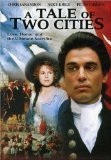
A Tale of Two Cities – 1980 movie
Sidney Carton was one of the first characters I really loved (after Winnie the Pooh and other childhood favorites), and the one who set me on a multi-year Dickens-and-other-classics phase that lasted through middle school and high school.
Charles Dickens isn’t known for his rollicking adventures or his page-turning plots. Even in the most-obsessed time of my classics phase, I struggled to get through every word of Bleak House and David Copperfield without skimming, looking for the good parts.
Generally I believe the book is better than the movie, and that’s probably true in this case as well. However, sometimes the book is inaccessible or difficult and the movie is a good introduction. I was introduced to A Tale of Two Cities through the 1980 movie
through the 1980 movie starring Chris Sarandon as Charles Darnay and Sidney Carton. Chris Sarandon played Prince Humperdinck in The Princess Bride
starring Chris Sarandon as Charles Darnay and Sidney Carton. Chris Sarandon played Prince Humperdinck in The Princess Bride , which I also saw around this time (one of the very few instances where the movie really was better than the book
, which I also saw around this time (one of the very few instances where the movie really was better than the book !). Having watched the movie version of A Tale of Two Cities first made the (unabridged) text accessible to me, as a sixth grader… I could follow the story better without being distracted by the long political sections or digressions on the geography of Paris.
!). Having watched the movie version of A Tale of Two Cities first made the (unabridged) text accessible to me, as a sixth grader… I could follow the story better without being distracted by the long political sections or digressions on the geography of Paris.
And the story itself is sublime: a man lost in apathy, alcoholism, and hopelessness, is inspired to love unselfishly. Dickens never tells us much about Sidney’s background, only that he is intelligent and capable of being more than he is, that he has wasted his talents and intellect. He is aware of his wasted potential, and he’s so apathetic, cynical, and hopeless that he doesn’t care. His unrequited love for Lucie Manette transforms him.
You can read a plot summary here, if you haven’t read it and/or it’s been a while and the details are fuzzy.
All through it, I have known myself to be quite undeserving. And yet I have had the weakness, and have still the weakness, to wish you to know with what a sudden mastery you kindled me, heap of ashes that I am, into fire- a fire, however, inseparable in its nature from myself, quickening nothing, lighting nothing, doing no service, idly burning away.
After Charles Darnay and Lucie Manette marry, Sidney Carton is accepted into their family as a friend. He sees the joy of a family, even though he can only experience it as something of an outsider. Later, when Charles is arrested and condemned to die on the guillotine, Sidney deceives him and takes his place, saving Charles’ life.
It is a far, far better thing that I do, than I have ever done; it is a far, far better rest that I go to than I have ever known.
One of the things I love so much about Sidney’s transformation is that, not only does he sacrifice himself for Lucy’s happiness, but he does it well. On his way to the guillotine, surrounded by jeering crowds, Sidney comforts a young woman next to him who is falling apart from fear. For this great moment, when he could have let himself wallow in self-pity again, he chose to be courageous not just for himself, but for someone else who needed him.
There is physical courage, and there is moral courage. Love is a beautiful thing, and Sidney’s sacrifice would have been courageous and beautiful even without that little touch. But that glimpse of his inner transformation highlights Sidney’s moral transformation – even as he is aware of his own failings, he rises to a challenge that would have defeated him before. He loves, and because he loves, he gives of himself even knowing that he is about to die. Perhaps because he knows he’s about to die. Those last moments of his life show the man he could be, and was, when it really mattered.
In case it’s not entirely obvious by now, I love redemptive endings. I love characters who make the hard choices and sacrifice themselves. I love good guys.
~~~~~
Please connect with me on Facebook or Google+!
The post Characters I Love – Sidney Carton appeared first on C. J. Brightley.
ou May Also Like:
Characters I Love – Jean Valjean
Characters I Love – Sir Percival Blakeney

June 18, 2013
Guest Post: Animals in Fantasy
Today we have a guest post on animals in fantasy from Jennifer Priester, author of the Mortal Realm Witch series. Thanks to her, I’ve added about 15 books to my To-Be-Read list, and I hope you will too!
I’ve added links throughout the post. The links on author names to go the author page on Goodreads, where you can find reviews of the books as well as easily find other books by the same authors. The links on individual titles go to the Amazon page for that book. In the case of series, I’ve linked to the first book in the series (that’s also the case with the images). I love the cover art on these books. Animals make great cover models!
Thanks, Jennifer!
Animals in Fantasy
What is a Fantasy Animal?




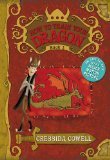

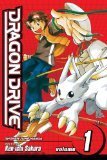

When you think about animals in fantasy your first thoughts are probably animals such as dragons, unicorns, griffins, or other mythological creatures. While many good fantasy reads such as Bruce Coville’s Unicorn Chronicles, and his magic shop book, Jeremy Thatcher Dragon Hatcher, Cressida Cowell’s How to Train Your Dragon series, Patricia C. Wrede’s Enchanted Forest Chronicles, and Ken-ici Sakura’s unique Dragon Drive series include these types of animals, how often do you think of regular, commonly thought of animals being part of or being the full focus of fantasy books?
Animals and magic…A Very Good Combination
I think of these books often because my favorite subjects are animals and magic. I especially love it when the two combine; and because of this I also write about these subjects. While this post isn’t about the authors and books that have inspired me, many of these mentioned books and authors have had a large influence on me as a writer. Some of my favorite authors ,who write fantasy specifically about animals or write often from an animal’s point of view, can be found throughout this post. Besides being favorites of mine, all the books I mention are definite recommendations.
Double View
Michelle Paver is the author of The Chronicles of Ancient Darkness series in which she often writes from the point of view of a wolf named Wolf, and the Gods and Warriors series in which she sometimes writes from the point of view of a dolphin. Michelle Paver’s books are both human and animal focused. Rather than from one viewpoint, her books are told from two. Sometimes the human, and other times the animal tells parts of the story. Whenever she writes from the animals point of view, it is very clear that she has a good understanding of the animals she writes about.
Wolves, Domestic Wolves, and 3 Other Animals
Dorothy Hearst is the author of The Wolf Chronicles series in which she writes from the point of view of the wolf Kaala, Kathryn Lasky writes from the point of view of the owl Soren in her series Guardians of Ga’Hoole, and that of the wolf Faolin in her series The Wolves of the Beyond. David Clement-Davies is the author of many animal fantasies including The Sight and its sequel Fell, both of which are told from the point of view of wolves, Fire Bringer is told from the point of view of a deer, and his other animal fantasy The Scream of the White Bears is told from the point of view of a polar bear. Richard Adams wrote two very distinct animal fantasies: Watership Down, told from the point of view of the wild rabbit, and The Plague Dogs, which is told from the point of view of dogs that escape a research center. Peter Howe wrote from the point of view of the stray dog Waggit in his books Waggit’s Tale, Waggit Again, and Waggit Forever.
From Cats to Dogs with Bears in Between
Erin Hunter writes three different animal fantasy series. The first is Warriors, in which there are several different series, super editions, guidebooks, short novellas and graphic novels all of which feature cats and their point of view. Depending on the book and series, some are regular cats, and others have special powers. The second series is Seekers. The first Seekers series is told from the point of view of four different bears, the brown bear Toklo, the white bear Kallik, the black bear Lusa, and the mysterious shape shifting brown bear Ujurak. The second Seekers series is also told by these same bears minus Ujurak. There are also graphic novels told exclusively by one the three main bears. Toklo and Kallik currently have their own graphic novel and Lusa’s has yet to be released. The third series is Survivors and is told from the point of view of dogs that have been brought together by an earthquake.
What Are Dogs For?
Bruce Cameron’s A Dog’s Purpose and A Dog’s Journey are both fantasy stories revolving around a dog that is reincarnated several times each time trying to figure out what his purpose in life is.
Did Dracula Ever Own a Rabbit?
James Howe’s animal fantasy stories often revolve around the vampire rabbit known as Bunnicula. Bunnicula was found by his current owners at the theater where the movie Dracula was playing. Bunnicula isn’t a blood sucking vampire; rather he sucks dry and turns all vegetables white. None of the stories are told by Bunnicula; instead, they are told from the point of view of the households other pets, the dog, Harold, and cat, Chester. However, their focus is on Bunnicula. In a later book, the dog Howie becomes a part of the series and adventures.
In total the main Bunnicula series has 7 books: Bunnicula, Howliday Inn, The Celery Stalks at Midnight, Nighty-Nightmare, Return to Howliday Inn, Bunnicula Strikes Again! and Bunnicula Meets Edgar Allan Crow. Bunnicula also stars in another 6 book series for younger children titled: Bunnicula and Friends. Harold and Chester have a 5 book series, also for younger children, titled Harold & Chester, and Howie is the star of the 6 book series: Tales from the House of Bunnicula.
A Familiar Adventure
Adam Jay Epstein’s three book series: The Familiars is told from the point of view of the cat Aldwyn and his friends, the frog Gilbert, and blue jay Skylar, all of which are on a quest to save their humans, who are wizards, from a familiar gone bad.
Magically Created Animals
The books told from an animal’s point of view tend to be my favorites, but sometimes, although told from a human’s point of view, the animal is still much of the books focus. Some of these books include: The character of Simber from Lisa McMann’s series The Unwanteds. Simber is basically a stone statue of a Cheetah that is alive because of magic. In the Sabrina the Teenage Witch series by various authors, Sabrina’s familiar, the talking black cat Salem who was a human warlock before an attempt to take over the world got him turned into a cat as punishment, is a highly important character to the series. Salem actually was so popular of a character that he eventually got his own book series for younger readers, in which he gets to tell stories from his own point of view, called: Salem’s Tails. Salem also played a big role in helping me create my own familiars for my Mortal Realm Witch series. Two of my familiars, Trillman and Sampson were highly inspired by this cat!
The Genius Dog, the Dog That Can Fly, and the Raccoon?
Other animals with large focus in human told stories are: the dog in Vivian Vande Velde’s book, Smart Dog, the ghost dog and the living dog in Peg Kehret’s Ghost Dog Secrets, the dog in Leigh Treseder’s My Dog Can Fly, and Roderick the raccoon in the Bone: Quest For the Spark trilogy, based on Jeff Smith’s Bone series, by Tom Sniegoski.
Animals With Small Roles That Make a Big Impact
Other times, in fantasy, the animals play very small roles, yet always manage to stand out as my favorite characters. Some of these animals include: Will’s dormouse in the W.I.T.C.H. book series, Appa the flying bison, and Momo the lemur-bat in the Avatar: the Last Airbender books, and the unique cow in A.D. Elliott’s book, The Remarkables.
Animals Are Popular
As you can clearly see, there are many books in which, aside from Simber, Appa and Momo, commonly thought of animals, become huge characters and very important ones in many fantasy books no matter how much or little focus is put on them. Sometimes the animals originally meant to be side characters even become as popular, or even more, than the humans! Why is this? I don’t know, but at least I’m not the only one who always notices and loves animal side characters!
Because I Can’t Resist Mentioning My All Time Favorite Animal Character!
One other book I feel is worth mentioning, before wrapping up this post, is an animal book based on a human told fantasy classic. This is The Sorcerer’s Apprentice as told by Carla Jablonski. This book is part of the Wishbone: The Early Years series, in which it is book #2. In this book, a Jack Russell Terrier, Wishbone, imagines himself as the main character.
I Would Read Them…If I Hadn’t Already!
These books vary greatly in age level, from young readers in second grade, to middle graders, and to YA and adult, but all of them are good fantasy books that in which I consider the animals to be the stars. If you love animals in fantasy as much as I do, many of these books are worth checking out to either read for yourself, or, for the younger age level ones, to younger readers if you have any.
Some Fantasy Book Reviews (The Books, Not the Book Reviews!)
I have also reviewed some of the above books. While at some point in time all reviews will be posted to my blog, www.animalsandmagic.wordpress.com, you can read them right now on Goodreads by following the links below. My reviews of the books are also on Amazon, but always appear on Goodreads first, often as soon as I finish reading the book.
The Chronicles of Ancient Darkness #1, Wolf Brother: http://www.goodreads.com/review/show/524927468
The Sight: http://www.goodreads.com/review/show/493462190
Waggit’s Tale: http://www.goodreads.com/review/show/494825469
A Dog’s Purpose: http://www.goodreads.com/review/show/494808811
The Remarkables: http://www.goodreads.com/review/show/596053000
About Jennifer Priester, the Author of this Blog Post
I am the author of the uniquely written Mortal Realm Witch series, as well as other, yet to be published, books about animals, the relationships between humans and animals, magic, the supernatural, and superheroes. I love animals and have owned many both past and present. Currently I have a Chihuahua called Taco, two Mini Rex rabbits known as Chibi and Kojikaki, and a 10 year old Goldfish that I won at a carnival called Pumpkin. I also have many animal friends. Both my pets and the animals that I’m not lucky enough to own have inspired many stories and those that have can be found in their own section on my website called Meet the Anipals.
Where to Find Me and Information About My Books
Currently I, my books; including free stories, my anipals, and more can be found in the following places:
The Mortal Realm Witch website: www.mortalrealmwitch.com Includes information on me, my books, my anipals, my characters including fun character interviews, some free to read stories and more. Also, coming soon are the websites: www.ammoonlightcreations.com and www.jenniferpriester.com.
Google +: https://plus.google.com/114965245287489676857/posts?hl=en-US
Facebook: https://www.facebook.com/pages/Jennifer-Priester/347205725374070
Twitter: https://twitter.com/animalsandmagic
Pinterest: www.pinterest.com/ammoonlight
Goodreads: www.goodreads.com/jenniferpriester
Where to Find My Books and a Free Book My Characters Are Featured In
Amazon Link to book one in the Mortal Realm Witch series, Mortal Realm Witch: Learning About Magic: http://www.amazon.com/Mortal-Realm-Witch-Learning-About/dp/193878300X/ref=sr_1_1?ie=UTF8&qid=1355409857&sr=8-1&keywords=mortal+realm+witch+learning+about+magic
Barnes and Noble Link to Mortal Realm Witch: Learning About Magic: http://www.barnesandnoble.com/w/mortal-realm-witch-jennifer-priester/1111957728?ean=9781938783005
Smashwords Link to The Battle of Ebulon, in which characters from across the Mortal Realm Witch series took part. Also includes some of my other characters from another book. Most of the characters that took part in my section of the book, Entry Point 12, were magical animals and animal superheroes, although there were a few human witches, superheroes, and a warlock as well. Due to the fact that you must be over 17 to download this book, which is free, I am making my section available as a free eBook and PDF download on the Mortal Realm Witch website: http://www.smashwords.com/books/view/325102
~~~~~
Please connect with me on Facebook or Google+!
The post Guest Post: Animals in Fantasy appeared first on C. J. Brightley.
ou May Also Like:
The Different Facets of Fantasy: Guest Post
Choosing Cover Art: Guest Post

A Careful Defense of Spec Work
There’s been some ongoing kerfuffle across the internet about spec work, with one website mentioned that I’m actually familiar with, 99designs.com.
A lot of good arguments have been made on both sides of the issue. Spec work definitely has its dangers and downsides. But having used 99designs, I wanted to let you know some of the arguments on both sides, and why I don’t think spec work is always a bad or immoral thing.
What is spec work or “work on spec”?
Spec work or work on spec is when a designer or artist of any type submits finished or partially finished design work for a prospective client before securing the work or deciding on an equitable fee. This can be in the form of a contest or competition to fulfill an actual need. In some cases (perhaps most?), the designer loses all rights to works submitted even if their work isn’t chosen or paid for as the “winning” entry. You can read a very good outline of spec work and its downsides at the nospec.com FAQ page.
Arguments Against Spec Work
Spec work devalues art and the effort of producing art by asking designers to work for free. This is even more true in the case where the rights to “losing” entries are also claimed by the entity running the contest or other submission process.
By devaluing the creative process and creative skill required, spec work encourages frantic submission of cheap entries by underpaid, less-skilled creatives.
Arguments For Spec Work
Spec work is a way for an entity looking at purchasing a custom creative work to see what the options are.
Spec work is a way for beginning creatives to build their portfolios while having a possibility of being paid.
My Experience
Please understand that, despite the explanation below, spec work doesn’t always work out well for everyone involved. If you are creative and considering spec work, go into it with your eyes open. However, I do believe it can have benefits for both parties when done right.
I used 99designs.com to identify a book cover for my first book, The King’s Sword . You can read a blog post I wrote about the process here. First, I did look around for a book cover designer before I chose to go with 99designs. I found several with very good portfolios, but none that I felt were especially close to what I wanted my book cover to convey. I did not have a specific idea of what should be on my book cover, but I did know that it wasn’t a stereotypical epic fantasy book and needed a cover that would properly convey the feel of the book. Essentially, I looked for an individual designer first but did not find one I was confident could fulfill the need. Let it be clear – I am not a graphic designer, nor do I have experience designing book covers myself. I am not an art or marketing expert. But I did know my book and the overall feel that I wanted the cover to convey.
. You can read a blog post I wrote about the process here. First, I did look around for a book cover designer before I chose to go with 99designs. I found several with very good portfolios, but none that I felt were especially close to what I wanted my book cover to convey. I did not have a specific idea of what should be on my book cover, but I did know that it wasn’t a stereotypical epic fantasy book and needed a cover that would properly convey the feel of the book. Essentially, I looked for an individual designer first but did not find one I was confident could fulfill the need. Let it be clear – I am not a graphic designer, nor do I have experience designing book covers myself. I am not an art or marketing expert. But I did know my book and the overall feel that I wanted the cover to convey.
I did not choose 99designs because of the price… in fact, running a contest there was more expensive than several of the designers I considered. I chose to go with the design contest largely because of the guarantee that I would be satisfied with the end result. 99designs has the fee decided upfront, as well as a standard contract for the rights transferred at the end of the contest. It isn’t a contest for some undetermined pittance… it’s a decent price, although not high-end. As the client, I actually was surprised by how big of a cut 99designs took – when I worked directly with the designer for a second cover, we didn’t have to pay that (which is totally above-board, by the way; there is a process to do it through the website itself) and it reduced my cost by about 1/3. I wasn’t aware of the amount that went directly to the designer vs. what 99designs took (that’s opaque from the client end) and I only discovered it later.
I understand that part of the creative process is understanding what the requirements are. So I spent hours over a few days to write an extensive design brief, including the overall impression of the book and some ideas of scenes and symbols that might be appropriate for the cover. When the contest went live, I identified designers on 99designs whose work looked promising and invited them to participate. I also spent hours writing feedback on individual entries, most of which I made public so that everyone interested could read the feedback and have the best chance of understanding where I was coming from and what I was looking for. I understood that if the designers didn’t have the best possible understanding of the book, they wouldn’t be able to represent it well.
In any design process, some designers really get the feedback and catch the vision. Others don’t, for a variety of reasons (anything from laziness to being in a hurry to a language barrier to a simple lack of skill in translating understanding into a design). After the first round of feedback, I was pretty ruthless in eliminating designers whose work was definitely not in contention. I figured it was better to let them know so they wouldn’t waste time on more iterations of a design I knew wasn’t a possibility.
I ended up with three designs that were technically very good and very appealing. One of them was submitted fairly late in the contest (which was less than a week, so it wasn’t a long, drawn out thing) – the designer read my extensive design brief and all the feedback on the submitted designs and came up with something new. That one represented my work the best, and ended up being the one I chose (with a few minor changes). I love the cover art I received and I think the process did result in the best design being chosen. I’ve gotten quite a few compliments on the cover, but I understand that it isn’t for everyone.
I already had the sequel finished and I worked directly with the same artist for the second book cover. He made the same amount of money and didn’t have any stress from working on spec, and I paid less because the fee to run the contest wasn’t an issue the second time, since I worked with him directly. We were both happy.
I would not have found this designer ordinarily – I’m based outside Washington, D.C., and he lives in Italy. Nor did his portfolio have anything similar to what he produced for me.
The main benefit of spec work for a designer is something just like this: it allows a designer to play around in a new area with the potential to get paid. Yes, it’s not guaranteed. Yes, once they get more experience and a portfolio, they should use that portfolio to attract clients directly. But when they don’t have a portfolio to support a new line of work… what to do, what to do? The advice given to creatives is to “build a portfolio.” You can do that for fictitious clients, or you can do it for real ones. Fictitious clients never pay; real ones, even on spec, might pay. Plus, the experience of reading a design brief and going through the process of understanding a client’s needs…. that takes skill. Skill must be developed; it isn’t innate. Producing for a fictitious client is easy, because there are no constraints, no one giving feedback, and no chance to evaluate how your designs may or may not work for the client.
Working on spec is not something a talented, skilled designer should do forever. Nor is it something that a business should use as a way to always choose the lowest bidder. I shouldn’t need to say it, but I will anyway: using any designer’s work without paying for it is completely unethical. I didn’t get the rights to any of the covers I didn’t use. I did keep track of their names though… now I have two other artists to consider for future work.
I don’t expect that my designer, or either of the other two in the final running, will use 99designs forever. That’s ok. I’ll be happy to pay their rates when they’re more established, and I’m glad my cover will be in their portfolio.
There is a place for art that is purely “on spec” in the sense that it was created with no design brief and no client in mind. An artist can sell art on his or her own website, on Etsy, on eBay, or on any number of other websites as well as in-person galleries. Those pieces were created for the pure joy of creation, but the artists also hope they sell. Most of my jewelry is like that… I created it, and I hope that eventually it will find the eye of the person who wants it. That person will be willing to pay for it, and until then, it waits.
There is also purely custom work, where an artist has his or her own website, takes custom orders, and works with clients to understand their needs and come up with solutions. I do some custom work for my jewelry business, but not a lot.
Spec work is the middle ground. Yes, it can be a rough place, but I don’t think anyone is meant to stay there forever. It’s like an internship… you’re learning and growing and developing skills and expertise to be used later in a higher paying job. It’s up to the artist to translate those skills into something marketable. No one becomes an expert overnight, and a designer with no portfolio can’t necessarily expect to charge professional rates. Spec work is a way to build a portfolio, not a way of life. Thus, spec work farms are bad… they turn what should be a learning experience into a financial prison. Obviously, I’m not in favor of that.
A Learning Experience
I touched on these topics already, but I wanted to note a few things that I think made my design contest ethical. These aren’t always the case, but if you are considering spec work (either from the designer side or the client side), please consider these factors and how they play into your decision.
I wrote an extensive, clear design brief that 1) gave a clear vision of the overall goal and feel, but 2) didn’t dictate how that goal and feel were to be accomplished. I trusted the designers to be designers; they would know more about how to achieve that goal than I would.
I gave detailed, public feedback on all the designs. All the designers had the same access to my impressions and feedback and the same opportunity to act on it.
99designs does not give contest holders (me) access to the designs during the contest. I only got access to the winning design after it was chosen and the contest was ended. The money was held in escrow for a specified time for me to approve it, and then the designer was paid. I had no access to the other designs.
Any/all of the designers could use any designs they submitted in their portfolio. Many of them chose to remove designs after they were rejected. However, the designs in the final running would be excellent additions to any portfolio, and I hope the designers use them to gain work in the future.
EXTRA: I used the design contest as a way to identify a designer (actually designers) to use for future work. I’ve already gotten a second cover by the winning artist and hope to have more work for him in the future. Unlike some contests, this wasn’t just a vague hint of future work… the second cover was completed and paid for less than two months later.
Think of it like an internship. An intern begins work knowing that the experience is the main benefit. Payment is minimal or nonexistent but at the end he or she will have something worthwhile to put on his or her resume. I considered myself to be something like an intern coordinator, and so I spent a lot of time trying to make the experience as useful as possible, even for the designers whose work I didn’t use. A company doesn’t owe an intern a job after the internship, but they do owe them a useful learning experience. As the client, I owed it to the designers to give them as much information as possible so that they could learn from the contest, even if they didn’t win.
Conversely, an intern should learn as much as possible at an internship. An internship is a good thing for someone just starting a career. It’s not a good thing for an experienced professional. A design contest wouldn’t be an appropriate use of skills for a professional designer with a full portfolio, but it isn’t necessarily a bad idea for a new designer who needs experience. It would not a good idea to continue in design contests and spec work forever once a designer has progressed past that early-career stage. That doesn’t mean spec work is inherently evil, or that intern coordinators are evil. It just means that it isn’t appropriate for everyone at every career point.
One More Thought
There’s a lot of talk about undervaluing literature/art/design/etc. that underpins the conversation about spec work. I understand that; I really do. I love art. I make jewelry in my free time as well as write. My husband is a talented amateur photographer. Beautiful things make me happy.
But the world doesn’t owe me the right to make a living doing something fun. If my novels are great, and people are willing to pay for the enjoyment of reading them, that’s wonderful! I’m sincerely grateful for every purchase. But you don’t owe that to me. I write my books because I choose to. I write on spec, and most fiction writers do too. We write because we want to, and we find enjoyment in it. We develop our skills. We practice our craft. We study writing. We attempt to learn how to market.
But when it comes to the end of the day… readers don’t owe us. It would be wrong to pirate a book, just like it’s wrong to use a photograph without paying for it, or any other piece of art without paying for it. Aside from the basic moral obligation to not steal, readers and other art consumers don’t owe artists anything. They don’t owe us good reviews, they don’t owe us word of mouth, they don’t owe us purchases. We appreciate all those things, but they are not our right.
Many writers have day jobs. Yes, it would be nice to make a decent living writing. But not everyone has the talent, skill, or experience to do that. The world doesn’t owe me the right to stay home and write all day, regardless of my level of skill. The world owes me fair payment for the work it chooses to consume. In the self-publishing world, we like to think that the cream rises to the top. If that’s true, those of us with the talent, skill, experience, and sufficient titles will eventually be able to stay home and write all day…. not because it’s our right as artists, but because we’ve earned it by producing things the world wants.
~~~~~
Please connect with me on Facebook or Google+!
The post A Careful Defense of Spec Work appeared first on C. J. Brightley.
No related posts.

June 13, 2013
Characters I Love – The Marquis de Carabas

Neil Gaiman’s Neverwhere – I like this cover better. It’s a trade paperback.
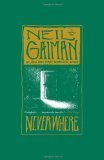
Neil Gaiman’s Neverwhere


The Marquis de Carabas of Neil Gaiman‘s Neverwhere is a fascinating character. Dangerous, charming, insulting, and heroic, he’s full of contradictions and larger than life.
For a fantasy reader, I was embarrassingly late to discover Neil Gaiman. I had read very little urban fantasy, and I bought Neverwhere on impulse, not really sure what to expect. I loved it! Problem: Neil Gaiman set my expectations for urban fantasy almost impossibly high.
The back cover reads:
Richard Mayhew is a young man with a good heart and an ordinary life, which is changed forever when he stops to help a girl he finds bleeding on a London sidewalk. His small act of kindness propels him into a world he never dreamed existed. There are people who fall through the cracks, and Richard has become one of them. And he must learn to survive in this city of shadows and darkness, monsters and saints, murderers and angels, if he is ever to return to the London that he knew.
In the following quote, Richard is talking to Door (a girl).
“He…” Richard began. “The marquis. Well, you know, to be honest, he seems a little bit dodgy to me.”
Door stopped. The steps dead-ended in a rough brick wall. “Mm,” she agreed. “He’s a little bit dodgy in the same way that rats are a little bit covered in fur.”
― Neil Gaiman, Neverwhere
Neverwhere is an intoxicating mix of darkness and beauty, of enigma and truth. Gaiman originally wrote it as a television series which aired on BBC2, then wrote a novelization of the story which differed from the television series. The novel was later published in the U.S., then later still rewritten for the U.S. market and published again, as the U.S. publisher apparently thought that many of the references to London were too obscure for U.S. readers. Then, a comic book version was produced based on the novelization. I’ve only read the novel produced for the U.S. market, so my comments are based on that version. If you enjoy comics / graphic novels and are not already familiar with Gaiman’s work, you should check it out. Some stories work in graphic format, others don’t. Gaiman’s work does – perhaps in part because much of his early work was in comics.
I’m eventually going to read all of Gaiman’s work. If you like British humor, you’ll love his work. If you like being surprised, baffled, intrigued, and amazed, you’ll love it. If you’ve ever considered reading urban fantasy but aren’t big on vampires and werewolves, start with Neverwhere.
All the characters are fantastic, but the marquis is my favorite in this book.
Oh, and there is also a new radio drama that aired in March! Check out the cast here and listen to the episodes here (not available at the moment, but maybe they will bring it back eventually).
~~~~~
Please connect with me on Facebook or Google+!
The post Characters I Love – The Marquis de Carabas appeared first on C. J. Brightley.
ou May Also Like:
Characters I Love – Sir Percival Blakeney
Characters I Love – Puddleglum
Characters I Love – Reepicheep

June 11, 2013
Tech Tools for Writers
This is a guest post by Carson Craig. Carson is a student and author with a steampunk novel coming out later this year. I invited him to write a post on tech tools for writers. Thank you, Carson!
As a sidenote, I (C. J. Brightley) also use and love Scrivener. If you’re a writer and you ever write out of order, or write with multiple points of view, or write anything that requires lots of research (such as hard SF or historical fiction), Scrivener can be a lifesaver. Keeping track of multiple storylines, lots of characters, lots of research, or scenes that need to be moved from one place to another… all these things are so much easier with Scrivener. I cannot recommend it highly enough.
Tech Tools
After starting my first novel, I quickly realized that writing it would only be half of the battle. Yes, staying motivated and meeting your word count goals are important, but as you begin to develop your story, you will soon learn the importance of organization. The first few thousand words may seem like a trivial task, but as your plot, characters and settings evolve, organization becomes more challenging. On top of keeping your writing organized, you will be challenged with keeping your files, research, and notes organized, and easily accessing anything you need to reference. After learning this the hard way, I decided to share some useful tools to help you avoid the headaches I have encountered.
1. Scrivener – Perfect for Keeping Your Writing Organized
The first tool, and the most useful so far, is Scrivener. It is a great, inexpensive software that you can try out for free for 30 days. I am not affiliated with the Scrivener product. I am recommending it as customer who has found the product very useful and easy to learn.
Useful Templates for Manuscripts, Screenplays, etc.
When you begin a Scrivener project, you have the option of choosing from a set of templates based on the project you are undertaking. If you have already started your writing in another program, such as Microsoft Word or Open Office, you can easily import and organize your text. My book, Steam Age: Titan Project, which consists of 44 chapters and over 90,000 words, was broken into chapters and scenes within a matter of minutes.
Notes, Keywords, Research, Media and Your Writing in One File
One of the greatest features of Scrivener is that it keeps all of your notes and research in the same file as your manuscript (or other writing file). Scrivener also has the ability to import media files. By utilizing the split screen feature, you can easily write on one screen while reading your notes, listening to interviews, or looking at an image on the other. On top of this form of organization, you can also assign notes to your sections, along with keywords. This makes all parts of your writing easily searchable.
Compile and Export Your Work To Several File Formats
Scrivener makes compiling your chapters and scenes into one file extremely easy. Exporting is simple, from rearranging chapters, to deciding which parts to exclude, to deciding what format you want the end product to be. Within only a few clicks, you can have your entire book reorganized in the order you want and exported in ebook format.
Great Tutorial for Beginners
I can’t outline everything Scrivener has to offer within one post. I recommend you check it out and download the free trial. You can run through the tutorial in less than an hour and learn nearly all aspects of the software and how to use it efficiently. If you are still unclear on all of its aspects, I have a post on my website called Why You Should be Using Scrivener for Your Writing that goes into a bit more detail.
2. Evernote – Clip the Web and Save Your Research
Most of you have probably already heard of Evernote, but if you who haven’t, I recommend checking it out. This service has both a web component and a desktop application. You can sign up for a free account and install the application to your computer within minutes, keeping both accounts synced at all times as long as you have an internet connection. Make sure to grab the Clipping Tool for your browser.
Clip Articles, Pages and Portions of the Web
Evernote makes gathering information for your writing easier than ever. As you search the web for important dates, details, and other necessary information for your writing, you can easily save what you see for later reference. The web clipper, which is placed in the top of your browser, saves articles and pages to your Evernote account. You can assign keywords and comments to what you clip for easy organization.
Easy Syncing on All Platforms
Once you have saved notes or clipped the webpage, you can quickly go back to reference whatever you need. Evernote can be used on Android and Apple devices, along with desktop applications for both Mac and Windows. You can access your account anytime on Evernote’s website, making forgetting key information a thing of the past.
3. Dropbox – Sync and Backup Your Writing
Dropbox is another key tool for my writing. By placing my novel in a Dropbox folder, I can easily access it from anywhere, on any computer, smartphone or tablet. The best part: when you make a change to the file, it syncs to your Dropbox account, which then syncs to all devices linked to your account. I could type out my outline on my laptop, go to campus and work on it on a library computer, then check it on my phone to read over it. Dropbox is free up to 18 gigabytes of storage (as of this posting). You can also earn extra storage by performing a few easy steps, such as sharing Dropbox with your friends.
Google Drive and SkyDrive – Two Alternatives to Dropbox
If you already have a Google account, Google Drive is a great alternative to Dropbox. It has almost the same features and can be placed on the same systems. SkyDrive is another option, although I have not used it.
4. Wappwolf – Backup Your Novel in Several Locations
If you are like me, you have your novel saved in several locations. I personally save it to my hard drive, external terabyte drive, Google Drive and Dropbox. Instead of having to perform the monotonous task of saving in four different locations each time, I can save it in one folder and Wappwolf will take care of the transfers from there. There are other uses for it, but I found it a great tool as an author. I can now rest easy knowing my book is safe in case some of the systems crash.
5. Google+ – Get Feedback on Your Work and Find an Audience
Although this plays more into marketing and spreading the word about your book, social media sites are great for finding an audience to help you improve your novel. With these sites, you can find mentors, editors, and beta readers to look over your novel and give you feedback. Google+ has proven to be far more beneficial to my writing than Twitter and Facebook. Because Google+ has an easy way to find and join communities, you can locate an audience that will be more than happy to comment on your work and help you progress as a writer. You can also assign people to circles, to keep individuals organized if you are trying to approach them for different purposes on your writing. Building your presence across other platforms will be necessary, but I recommend starting here.
Additional Considerations
This short list should help you start bringing your next story to life, from researching to organization to formatting to backing up your work and finding critics to help you improve the overall final version of your novel. There are many more tools out there. You might also consider:
Liquid Story Binder - Helps you stay organized, but also generate timelines and much more
yWriter - Much like Scrivener, but without some of the bells and whistles. If you want free software with fewer features, check it out
Odesk - great place to hire freelancers online who can help you with any part of your book, whether it be editing, illustrating or formatting.
The Most Important Tool
The most important tool to the writer is their mind. Make sure to constantly be training it, whether it be reading, listening to podcasts, or just meditating. Keeping a fresh mind and finding time to build your skills as a writer will help you develop over time into a much better author. If you have other tools that I did not mention, please feel free to leave a comment to share with the rest of the readers.
Bio: My name is Carson Craig. I am the author of the steampunk novel Steam Age: Titan Project, which is currently being edited and planned for release later this year. I blog at CarsonCraig.com about writing and book marketing. I want to help others overcome the difficulties I faced in writing and marketing my novel. I have also posted sample chapters to my novel on my website. While I am not focused on writing and marketing my book, I am studying mechanical engineering at the University of Kentucky and networking within the entrepreneurial community of Lexington, KY.
Twitter: @carsonwcraig Google+: Carson Craig
~~~~~
Please connect with me on Facebook or Google+!
The post Tech Tools for Writers appeared first on C. J. Brightley.
ou May Also Like:
Self-Publishing vs. Vanity Publishing
My Writing Process
Comments on: Joe Konrath/Barry Eisler on Digital Denial

June 5, 2013
World-Building for Fantasy Authors
Caveat: I don’t believe in rules for writing. This post isn’t meant to be a list of things you must do, or must not do. Fantasy can be as realistic, or as unrealistic, as you wish. Neither is necessarily better; they’re just different. This post is meant only to serve as a brainstorming exercise. It is meant to raise questions that might help you as you think about your story and your world. You are more than welcome to throw any or all of it out for any given story.
As a fantasy writer, it can sometimes be tempting to spend so much time on world-building that the writing is neglected. This isn’t meant to be an exercise in procrastination. Instead, I hope you’ll use this as a general reminder of the different factors that can affect a story and its realism. If you want to be extremely realistic, you may want to do research on different historical periods that can shed light on your story. If your story is set in France in 1792, obviously you would want to do research on the French Revolution… if you simply ignore this real-life event, your setting loses its realism. If you want to invent your own nations governed by glittery dragons, that is completely fine! You don’t have to play by the rules of late 1700s France to do it.
However, even though I don’t believe in rules for writing, I do understand that there are some things that generally work, and some things that generally don’t. One of the things that generally works is making sure that your fantasy world is consistent. Your book can be consistent with history to some degree, but it doesn’t have to be. It probably SHOULD be internally consistent.
Consistency with History
As a fantasy author, you have the freedom to play with history as you wish. Alternate history is a form of fantasy, after all. If you choose to ground your story in real history, be clear in your own mind where history ends and fantasy begins. You don’t have to clear everything up in your story, but readers of historical fantasy may appreciate a note at the end describing what is your invention and what is real, in case they wish to do additional research. Obviously, the glittery dragons are probably not real, but if you take liberties with historical figures in non-obvious ways, this is probably a good idea.
Internal Consistency
Internal consistency may be even more important for fantasy writers. Since we’re already asking the reader to suspend disbelief in one area, we need to be extra careful not to remind them of it later on. Just as you want to be sure that Susie has blue eyes throughout the whole book rather than randomly changing to brown-eyed with no explanation half-way through, you also must make sure that whatever rules operate in your fantasy world, they are consistent. If there IS a change, it needs to be for a reason.
This isn’t a rule, exactly. Rules can be broken, and broken to good effect. This is more of a concept to keep in mind. Internal inconsistencies jar at the reader, reminding them that “hey, you’re reading a book, and this thing here looks like the author forgot what they already said six pages ago. That’s not how magic/dragons/politics/etc. work.” As a reader, I don’t like to be reminded that I’m reading a book, and I especially don’t like to be reminded by something that looks like a mistake. Let me experience the book. Let me be immersed in a fantastic world. Don’t pull me out of it! Internal consistency is a way to create a world that isn’t this world, but is a world in which the reader can be immersed, even if only for a short time.
Setting:
Physical:
What time of year is it? How much time passes during the story? What is the weather like? What is the physical landscape (both natural and manmade)? Rivers, cities, mountains, swamps, villages, buildings, walls, castles, airports, etc. – anything can be significant and can help establish your setting.
Historical:
What historical events have influenced the locale of the story? Was the country conquered at some point? Is it still occupied? Did the conquerors assimilate or is there segregation of some type? Has there ever been a plague/war/coup/tsunami/other significant disaster or event? How long ago? What effects are still evident, if any? What historical events affect current beliefs?
Technological:
What is the technological environment? Is it a stone age culture, or a futuristic society? Did different fields of study develop at the same rate as in human history? If not, why not? How does technology affect the culture, political environment, and physical setting?
Ideological and Religious:
Is the culture fragmented along ideological or religious lines? What do the people believe? How does it affect their actions? Has it changed from what their ancestors believed? How? How does it affect families structure? How does it affect politics?
Ethnic:
Is there ethnic diversity? If so, how is it dealt with? Is there fragmentation along ethnic lines, and if so, why? Has it always been this way? Are different ethnic groups also separated by ideology and/or religion? Were they on different sides or the same side of previous historical events?
Magic and Other Fantastical Things:
Is there magic? How does it work? Is it accessible or useable by everyone? If not, why not (training? natural talent? laws of inheritance? some other reason?)? Are there monsters or other fantastical creatures? How do they interact with humans?
You may wish to check out this article on Writer’s Digest, which outlines these ideas a bit differently.
Characters:
Consider thinking through a character sheet for at least your main characters. There are any number of character sheets online, and many of them include everything from your character’s eye color to their favorite car to their least favorite memory of childhood. Ignore the parts that don’t make sense or don’t add anything to your understanding of your character. The point is to understand who your character is and how he or she will act when presented with the challenges in your story. (I used he, but it could be a she too. Typing “he or she” a hundred times was more distracting than helpful.)
What drives this character?
What does he want? What does he need? Do these differ?
What does he fear?
What is his background? What events and experiences have shaped his character and personality? Is his ethnic, religious, or cultural background different than that of other characters? What effect does this have on him and on the story? Is your character a product of the world of the story, or is it foreign to him?
How is he connected to other characters in the story or in his own background? Relationships are important in making characters real. People don’t generally exist in a vacuum, and your characters probably don’t either. If they don’t have any connections, why? There is probably an interesting story there too!
World-Building Before You Write vs. World-Building After You Write
Many fantasy writers do extensive world-building before they begin writing. However, I’ve found that it works best for me (your mileage may vary!) if I do fairly minimal world-building ahead of time. Of course I need to know the big questions – is there magic? In general, how does it work? Does my main character have access to it or not? Certain questions are critical to getting started.
However, I’ve had the most success when I spend less time on world-building ahead of time. Instead, I like to dive into the world and start writing. As I write, I come up with questions… How does this country relate to that country? What social structures are relevant to this character? Etc. To some extent, these questions can be answered as you write. At least for me, focusing too much on world-building, can steal some of the excitement of discovering the story as I write. Additionally, sometimes a story takes a new direction as I write, and it’s frustrating to have spent weeks on world-building when the questions and answers that result aren’t relevant to (or actually conflict with) the story I end up writing.
World-building is fun! But it’s not writing. It’s an enjoyable stage of preparation for writing. If you find yourself spending so much time on world-building that you never write the story, try just jumping into writing without a clue what’s going to happen. As you find out, explore your new world. See what works. See what makes it enjoyable. Then during editing, go back and pull on those threads that were most interesting and develop them more.
Most of all, enjoy the process. Writing isn’t always easy, but it should be enjoyable.
~~~~~
Please connect with me on Facebook or Google+!
The post World-Building for Fantasy Authors appeared first on C. J. Brightley.
ou May Also Like:
Why do you read fantasy?
The Different Facets of Fantasy: Guest Post
How to Choose and Use Beta Readers



